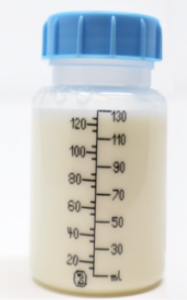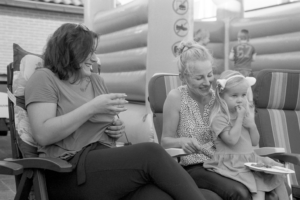In a previous life, I developed my own films, predominantly black & white. In 2009, I got myself a 24 megapixel full frame camera, and made the switch to 100% digital photography. But recently, partly out of nostalgia, and partly out of curiosity, I got myself a few black&white films just to give it a try again.
I knew I’d have to do my own film development, but I didn’t aim at also doing my own printing. I don’t have the needed space to create a fully-equipped darkroom, and I don’t fancy breathing chemicals for a couple hours again. But I could manage doing my own film development and then scan the negatives using a dedicated film scanner.
The results amazed and encouraged me.
After developing my first films with the chemicals that were provided in the starter kit, I wanted to revisit two old favourite developers that I had good results with in the early 2000’s: Amaloco AM20 Nivenool and Kodak XTOL. But I quickly found out that the landscape had changed drastically. Amaloco ceased to exist, and Kodak only sells XTOL in 5L packages, specifically aiming at professional use. It would take me forever and a week to consume 5 litres of XTOL, and the stuff had a shelf life of a month, under favourable circumstances.
Enter ADOX XT-3
But all was not lost. A few companies are keeping the art of “wet photography” (as opposed to dry photography, meaning digital because no chemicals needed) alive. One of these companies is Foto Impex in Germany, who acquired ADOX, a company specialising in film emulsions and darkroom supplies. And it just so happens that ADOX came up with a recipe that is quite similar to XTOL and has the same properties that made XTOL a favourite, while at the same time resolving some of the inherent XTOL problems. It’s called ADOX XT-3, and it’s apparently the bee’s knees.
So I went to FotoFilmFabriek in Dordrecht, and got myself a 1 litre kit of XT-3.
Step 0: getting everything I need
Sounds easier than it is. You can store an opened bottle of Rodinal for decades and it will remain perfectly ok. But you will want to store most other developers dark, at a constant temperature, and in a bottle containing no or little air.
There’s a couple ways in which XT-3 can be used:
- Dilution 1+1, 1+2 or 1 + 3 and the use as a one shot developer (most common is 1+1)
- Re-use of the stock solution with a prolonging of the developing times after the 5th film
- Re-use of the stock solution with replenishment (if replenisher is available)
Since I initially plan to use the XT-3 stock solution (the stuff you get a litre of when you dissolve the kit) in a solution of 1 part stock and 1 part water, and since in my Paterson tank, I use 300cc to develop one film (OK, I  know it’s 290, but I usually round that up), I wanted to come up with 6 bottles of 150cc. I therefore needed six bottles that would contain as close to 150cc as possible, in order to leave as little air as possible.
know it’s 290, but I usually round that up), I wanted to come up with 6 bottles of 150cc. I therefore needed six bottles that would contain as close to 150cc as possible, in order to leave as little air as possible.
I ended up ordering 10 130cc bottles from a company that makes baby equipment, used to store baby milk. I found out that, whereas they are sold as 130cc bottles, if you fill them all the way to the top, they’d contain 155cc, so they were as close to perfect as makes no difference.
Foto Impex (the owner of ADOX) tells me the shelf life of XT-3, if properly stored, is somewhere between 6 months and a year, which is a huge improvement over XTOL.
Step 1: creating the stock solution
Just like XTOL, XT-3 is a powder kit, with two components in two vacuum-sealed bags.
XTOL, if I remember correctly, had to be dissolved in water of 30°C. The XT-3 instructions say “between 20 and 27°C”. XTOL could be hard to dissolve properly, but I had already read that XT-3 is supposed to be a lot easier to dissolve.
So I sat down with 900cc of water at 26 degree in my 1l measuring cup, and while stirring with an old fork, threw in the contents of the first bag. To my amazement, it didn’t take more than a minute to fully dissolve. Adding the contents of the second bag made the liquid somewhat opaque, but another one and a half minute of stirring got it completely clear again, with no sign of residue. For good measure, I kept on stirring for another minute or so, and then let the stuff rest for a minute or so to see if any solid matter that I had missed would remain. As this wasn’t the case, I filled up six bottles to the brim, and considered the remaining 50cc or so collateral damage. This leaves me with enough developer to comfortably develop 6 films at 1+1.
I know I should be able to get more films out of that, but I value consistency, so I prefer to use it as a one-shot developer.
Step 2: actually using it
As soon as I had a film filled up, I hastened to get it developed.
Doing so is straightforward. You can just use the development data for XTOL, but the Massive Dev Chart lists XT-3 separately.
I had a Rollei RPX400 which I had exposed at box speed (ISO400). This film is said to be a bit less “punchy” and dramatic in character than, say, Tri-X, and to have a very rich grey scale palette. I had shot a couple images made in fairly high-contrast situations, and also a few portraits, so I thought that would be a nice candidate for testing XT-3. So, following the recipe found on Massive Dev Chart, I soaked it for 12 minutes in XT-3 1+1 (1 part stock solution and 1 part water) at 20°C.
I have to say I wasn’t disappointed. XTOL is renowned for delivering really fine grain, and indeed the grain I got out of the Rollei RPX400, which is reported to be a traditional grain much like Tri-X and HP5, is much less in-your-face than what I got out of the Tri-X using Rodinal.
Fine grain is often said to go at the expense of sharpness, but, compared to the Tri-X I developed in Rodinal, I see no complaints in that area.
And the tonality?
Let’s just say that, for portraiture, I’ll probably be using this film more often!
Tri-X is usually said to render skin tones beautifully if you expose it at ISO320, but the RPX400, at least in XT-3, does a splendid job at ISO400!
So… what have we learnt?
For “general”, low to medium contrast subjects, this combination will produce a vintage-y feel that will not appeal to everyone. If you like your B&Ws dramatic, punchy and high-contrast, Tri-X is probably a better idea, what with its tendency to create harsher contrast.
But if you’ve been photographically raised in the seventies like me, you appreciate a wide palette of grey tones, and you like your textures, this film/developer combination can produce fascinating results. And if you know you’ll be going into harsh light-situations, this may be just what you want.
We’ve also learnt that, yes, XT-3 delivers a finer grain than you’d expect, and still retains sharpness. Once you’ve made the stock solution, it’s also silly easy to use if you use it as a one-shot developer in 1+1 dilution. And quite frankly, creating an XT-3 stock solution is much easier than I remember creating an XTOL stock solution to be.



1 Pingback